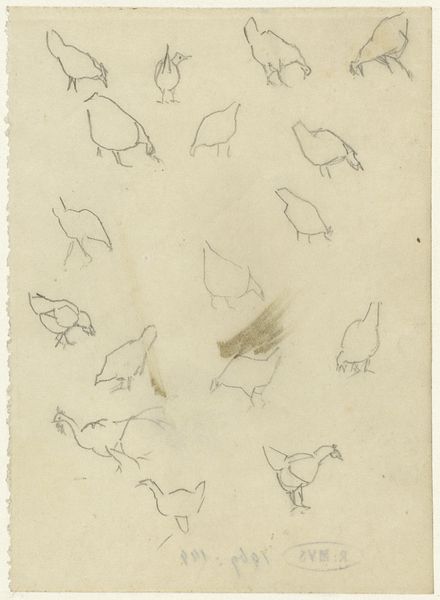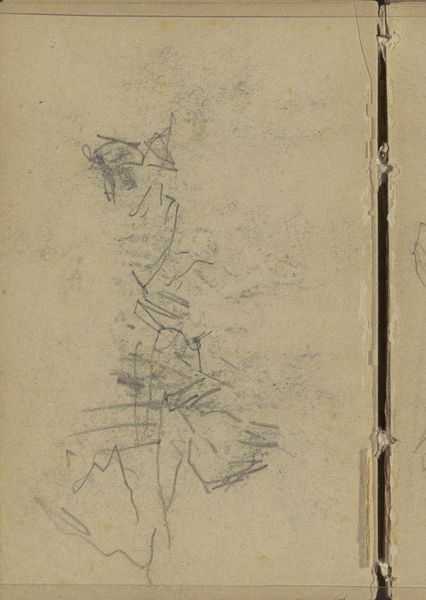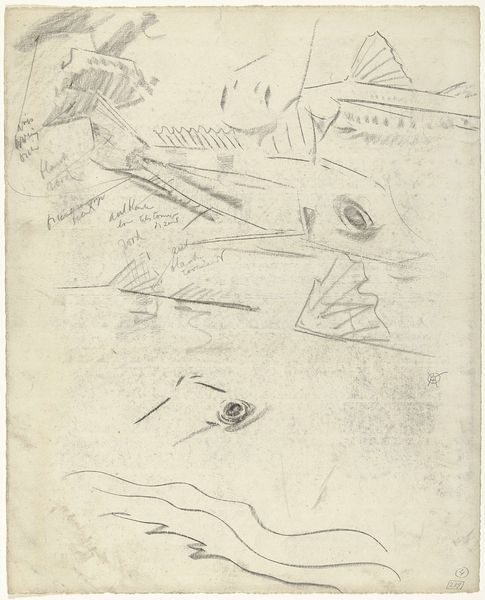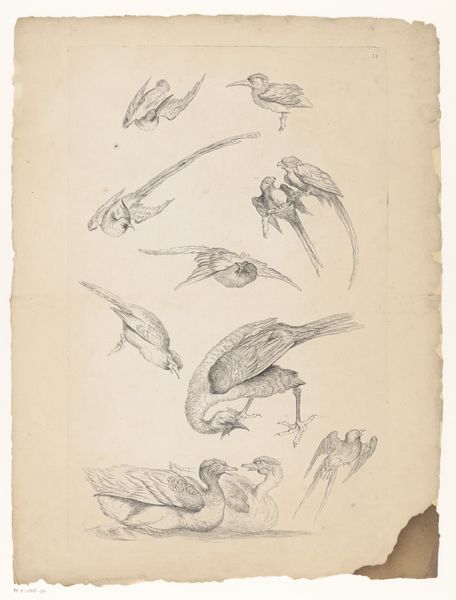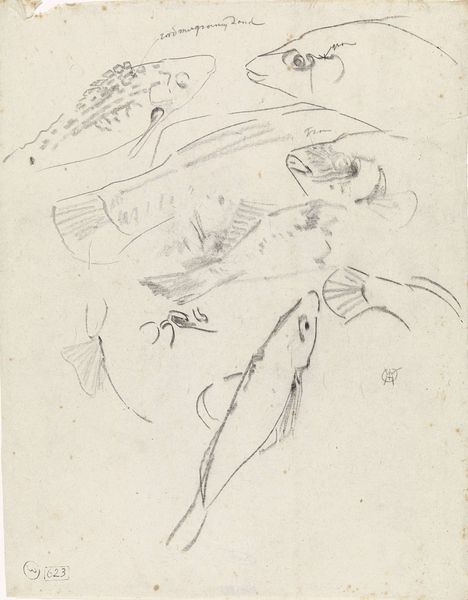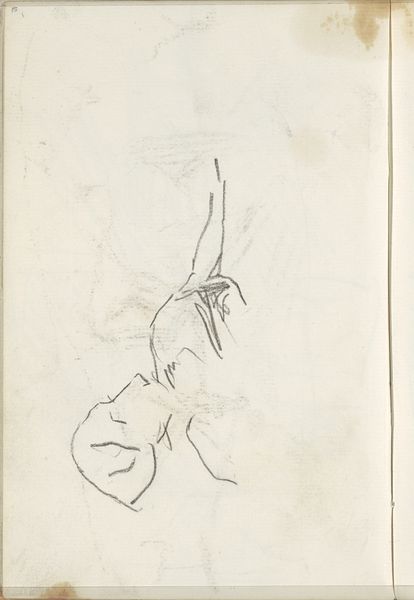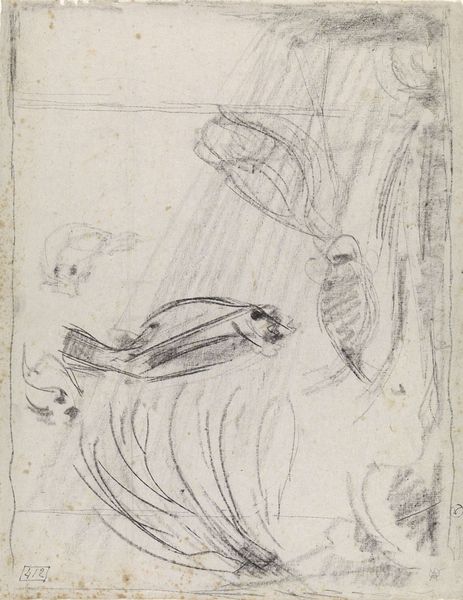
drawing, pencil
#
drawing
#
imaginative character sketch
#
toned paper
#
light pencil work
#
quirky sketch
#
pencil sketch
#
figuration
#
personal sketchbook
#
ink drawing experimentation
#
pencil
#
line
#
sketchbook drawing
#
storyboard and sketchbook work
#
sketchbook art
Dimensions: height 336 mm, width 282 mm
Copyright: Rijks Museum: Open Domain
Editor: Here we have Gerrit Willem Dijsselhof's "Studies van ponen," a pencil drawing created sometime between 1876 and 1924. The loose, flowing lines give the piece a sense of spontaneity, almost like a snapshot of a fleeting moment underwater. What do you see in this work? Curator: This image vibrates with potential, doesn't it? The 'ponen,' or gobies, become potent symbols. Dijsselhof gives us not just studies of fish, but perhaps studies of *observation* itself. The fish, simplified, repeated... they are reminiscent of ancient symbolic languages. Consider how water, these creatures' domain, often represents the subconscious. What memories, then, rise to the surface with these forms? Editor: That's fascinating! I hadn't considered the water as symbolic. It's true, they do look like they're emerging from something. Curator: Look closer at the variety of line. Some strokes are confident, others hesitant. Is he showing us a complete image of one, or glimpses of many? Are these mere gobies, or do they take on traits…human traits perhaps? The subtle anthropomorphism could reflect the viewer seeing themselves reflected in the natural world, and even how humanity has projected our symbols onto everything around us. Editor: So the drawing, seemingly simple, is actually layered with ideas about perception and symbolism. Curator: Precisely! It invites us to contemplate our relationship with nature and how we encode meaning in what we see. Dijsselhof challenges us to decode his visual language, his personal iconography. Editor: I'll definitely look at sketches differently now, appreciating the potential depth beneath what seems like just a quick study. Curator: Agreed. It's a reminder that even the simplest image can resonate with layers of cultural and personal meaning.
Comments
No comments
Be the first to comment and join the conversation on the ultimate creative platform.



